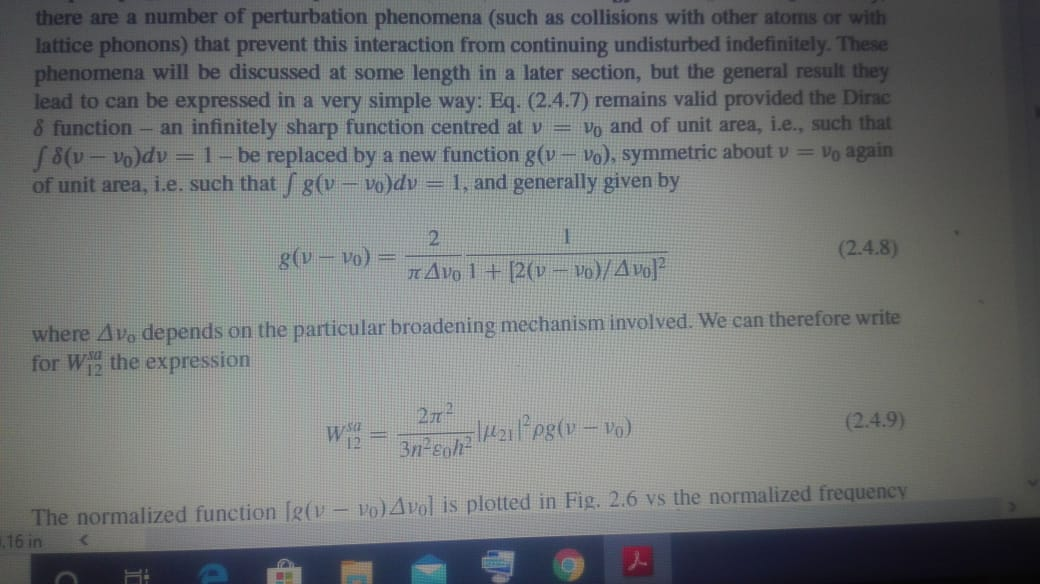
SOLVE USING MATLAB
Q. No. 1 Consider the line profile for stimulated emission transition rate, equation 2.4.8 which is Lorentzian. Plot the normalized Lorentzian line. Check if you can reproduce Fig. 2.6. (10) (b) Now plot same function on one graph by fixing the peak position at y-axis as (i) 0.8, (ii) 0.7, (iii) 0.5. (10) (c) Calculate the value of FWHM for all plots. (10) there are a number of perturbation phenomena (such as collisions with other atoms or with lattice phonons) that prevent this interaction from continuing undisturbed indefinitely. These phenomena will be discussed at some length in a later section, but the general result they lead to can be expressed in a very simple way: Eq. (2.4.7) remains valid provided the Dirne 8 function - an infinitely sharp function centred at y = Vo and of unit area, i.e., such that | 8(v - Vo)dv = 1-be replaced by a new function g(v - Vo), symmetric about v = Vo again of unit area, i.e. such that g(v vo)dv = 1. and generally given by 1 g(V Vo) = 2 TAVO 1 + [2(v Vo)/Avo]2 (2.4.8) where Av, depends on the particular broadening mechanism involved. We can therefore write for W. the expression 212 3n- Su 12 +|1421 lpg(v vo (2.4.9) The normalized function (g(V - Vo) Avo] is plotted in Fig. 2.6 vs the normalized frequency 1.16 in FE Q. No. 1 Consider the line profile for stimulated emission transition rate, equation 2.4.8 which is Lorentzian. Plot the normalized Lorentzian line. Check if you can reproduce Fig. 2.6. (10) (b) Now plot same function on one graph by fixing the peak position at y-axis as (i) 0.8, (ii) 0.7, (iii) 0.5. (10) (c) Calculate the value of FWHM for all plots. (10) there are a number of perturbation phenomena (such as collisions with other atoms or with lattice phonons) that prevent this interaction from continuing undisturbed indefinitely. These phenomena will be discussed at some length in a later section, but the general result they lead to can be expressed in a very simple way: Eq. (2.4.7) remains valid provided the Dirne 8 function - an infinitely sharp function centred at y = Vo and of unit area, i.e., such that | 8(v - Vo)dv = 1-be replaced by a new function g(v - Vo), symmetric about v = Vo again of unit area, i.e. such that g(v vo)dv = 1. and generally given by 1 g(V Vo) = 2 TAVO 1 + [2(v Vo)/Avo]2 (2.4.8) where Av, depends on the particular broadening mechanism involved. We can therefore write for W. the expression 212 3n- Su 12 +|1421 lpg(v vo (2.4.9) The normalized function (g(V - Vo) Avo] is plotted in Fig. 2.6 vs the normalized frequency 1.16 in FE








